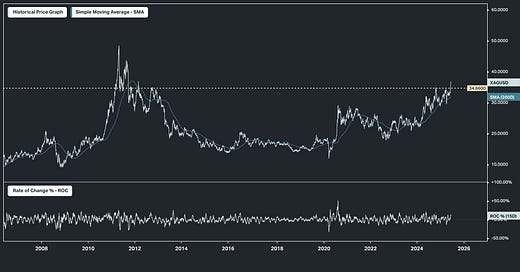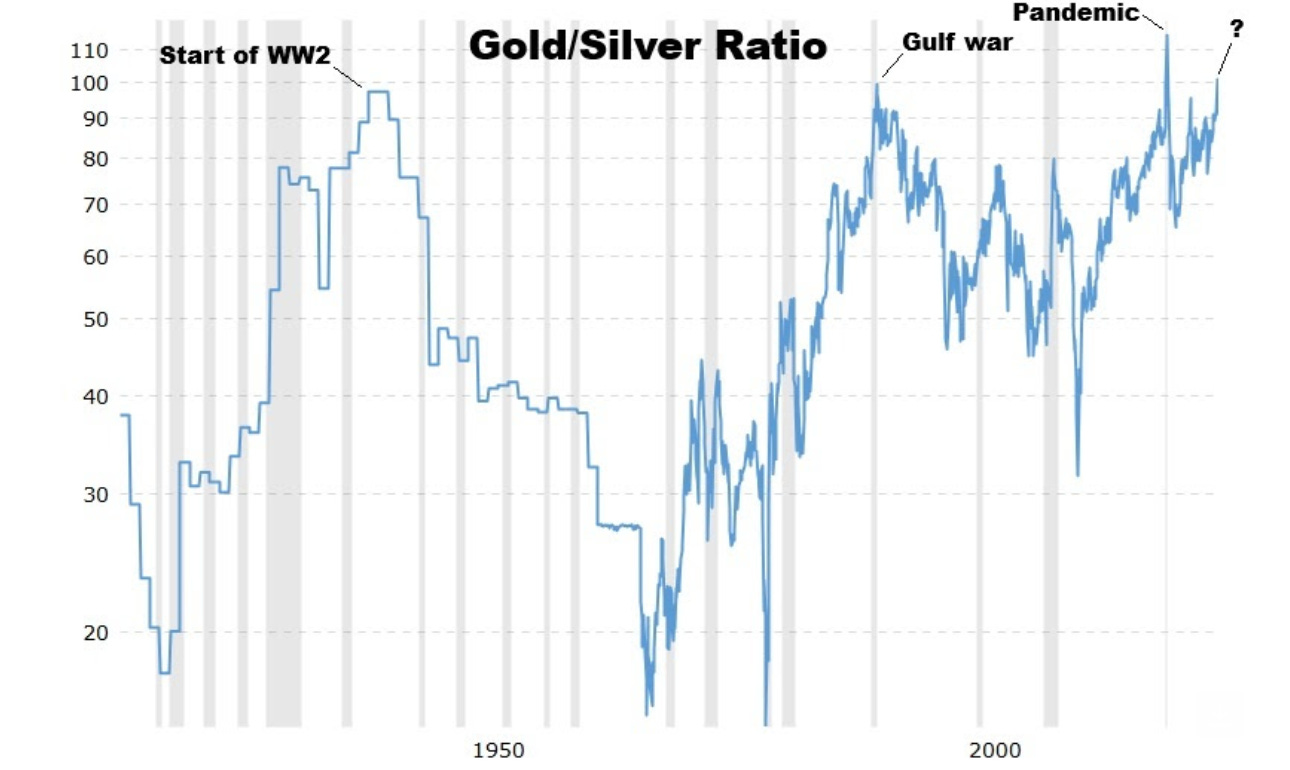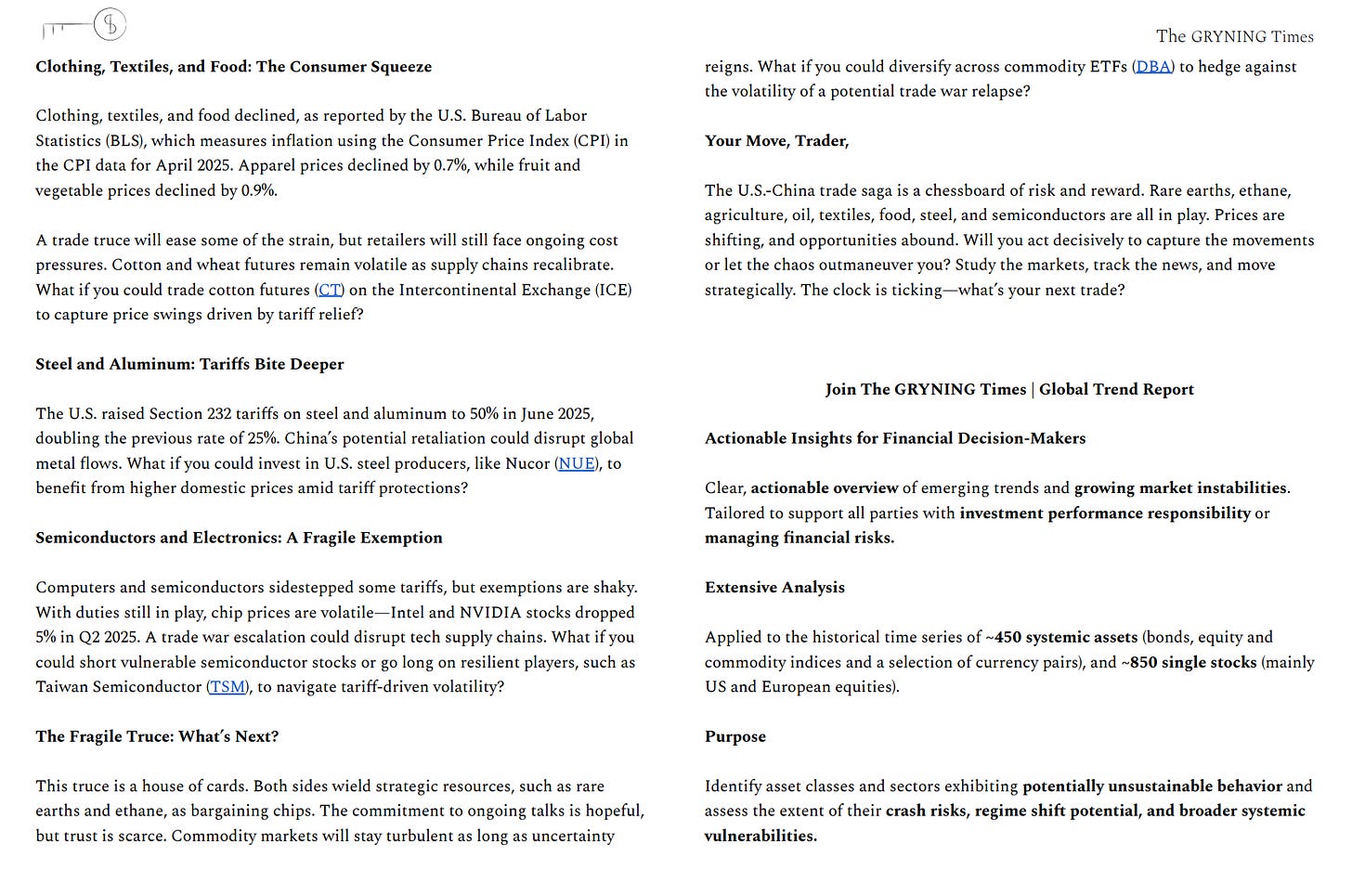More Risk
US stocks closed mostly higher on Monday as high-stakes trade talks between the US and China began in London, rekindling hopes of a tariff truce.
The S&P 500 gained 0.1% and the Nasdaq rose 0.3%, while the Dow finished flat.
The prospect of a breakthrough helped lift market sentiment, with consumer discretionary, materials, and tech stocks leading gains, while financials lagged.
On the corporate front, Apple fell 1% amid a lack of major AI announcements at its WWDC event, while Qualcomm jumped 4% on its $2.4 billion acquisition of Alphawave.
Shares of Nvidia (0.6%), Amazon (1.7%), Microsoft (0.5%), and Alphabet (1.7%) also advanced.
Over the past ten days, a few significant risks to market stability have bubbled up.
The Ukraine/Russia peace path was abruptly reversed.
The budget glide path was muddied, making the cornerstone tax cut extensions less certain.
The sustainability of the 90-day tariff reprieve with China came into question.
On the latter, Trump had a call with Xi last Thursday, and that set the table for an emergency meeting with U.S. and China trade delegations. We learned late yesterday afternoon that those talks would carry over through to the next day.
So, the outcome of a very consequential issue remains unclear.
What does seem clear is that China doesn't seem to be entering these talks in a position of desperation - even after months of what Scott Bessent has called an effective trade embargo.
Remember, this new spat started with Trump saying that China had "totally violated its agreement" made last month for the tariff reprieve. Maybe it was because of this ...
Ahead of this meeting, China reported the third largest monthly trade surplus on record. So, instead of choking on trade tariffs, they worked around them - shipping through other trading partners.
It seems obvious that the only way to resolve the China problem (i.e. its multi-decade predatory export model) is through a globally coordinated agreement with trading partners, to isolate China.
But given how few trade deals have materialised, a unified global front against China won't be happening anytime soon.
With stocks trading at three-month highs and the VIX trading around four month lows, the market seems to be pricing in too much optimism for the outcome of these trade talks.
If we were looking for clues on the geopolitical stability front, we do have this breakout in silver that started on Thursday of last week, the day Trump and Xi had a phone call.
Silver is one of the biggest movers on the year, across global markets. And half of the move has come in the past week. Take a look at the gold/silver ratio ...
As you can see, this ratio is at extreme levels, which has historically been associated with extreme moments of safe-haven demand.
In these past cases, the gold safe-haven demand leads, pushing the ratio to extremes. Silver later follows (higher) on both industrial demand (in wartime) and relative value (as a safe haven asset).
And in these prior peaks, it's the rise in silver that pushes the ratio back down.
So, this surge in silver looks like a signal that perhaps there is more risk than markets are pricing in.
ps: A few thoughts / ramblings:
pps: If you find these notes of value, and know someone who may benefit from them, please share this with them.











